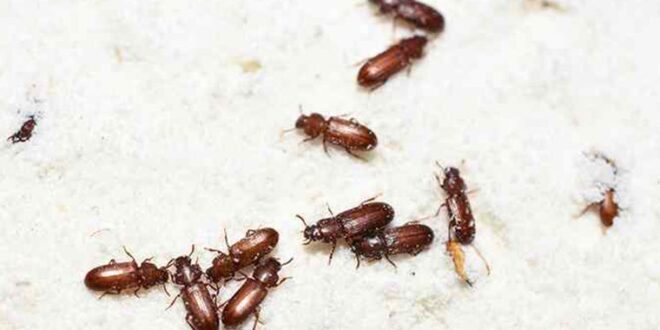Pantry bugs are undoubtedly one of the many problems homeowners face. These insects, from Indian meal moths to flour beetles, settle into foodstuffs, consume and contaminate them with droppings, eggs, and secretions in the process.
Although they do not bite, sting, or directly harm humans, their damage to foodstuff can be profound and is no less troublesome. Some, like the flour beetles, have remarkable longevity, up to three years.
This article guides how to keep them away from your food items and home. For professional help in dealing with domestic critters, check over here.
Dealing With Pantry Bugs
Regular Inspection
Regularly inspect food storage sites for signs of these bugs. They are usually visible at first glance. However, they often hide in deeper parts of food bags and containers. Therefore, check through potentially infested containers and sacks down to the bottom for good measure.
Pour out the contents to check through them, if you must. Pantry bugs are indiscriminate in their diet. Therefore, leave no stone unturned. You could also spot these bugs crawling around the home or by windows.
Proper Disposal or Treatment of Food
Properly dispose of infested food articles – and promptly too. Do not allow such foodstuff to linger in your kitchen or its environs long enough for a re-infestation. Moreover, if a food article seems infested and you are unsure and cannot bear to toss it out, you could treat it. If present, you could freeze these foodstuffs for a few days or heat them in an oven to kill off eggs and larvae.
Regular Cleaning
Clean your food storage sites as often as possible. Wipe off crumbs and spills as soon as you spot them. Use water (and soap, if necessary) for cleaning. A mild disinfectant and a dry wiping cloth could also suffice.
However, avoid using substances like bleach, pesticide, or ammonia. These substances could contaminate your food. It’s noteworthy that you could engage in a total clean-up of your food stores every few months – say, three to six months – to keep these critters out.
Use Sturdier, Secure Containers
Use sturdier, more secure containers to store food. For example, you could opt for plastic, glass, or metal containers ahead of cardboard or foil models. Pantry bugs are less likely to invade sturdy, airtight containers because they are less likely to suffer damage from abrasion or other mechanical forces.
Compromises – like holes or tears – are things that pantry bugs could exploit and slither through for their nasty business. Mason jars are particularly effective. They also keep foodstuffs organized and your shelf nice-looking.
Buy Foods in Small Batches – and Use Repellents
The more foodstuff you stash away at any point in time, the greater the chances of infestation. Therefore, purchase food articles in smaller batches that take lesser time to exhaust. Also, it would be best if you consumed them in order of the time you bring them in. This reduces the chances of food lying redundant for too long – and the chances of an infestation.
In addition, you could use repellents like bay leaves to keep these critters at bay. Little amounts in each container should suffice.
Early action is one of the most critical factors in preventing full-blown bug infestations in the home. Pantry bugs are no different. Thus, you must be attentive to the subtlest signs and address them as soon as possible. This will help prevent damage and contamination of food articles and help you save up on unnecessary, avoidable expenses.
 HammBurg Be informed with latest news, reviews, entertainment, lifestyle tips, and much more.
HammBurg Be informed with latest news, reviews, entertainment, lifestyle tips, and much more.




